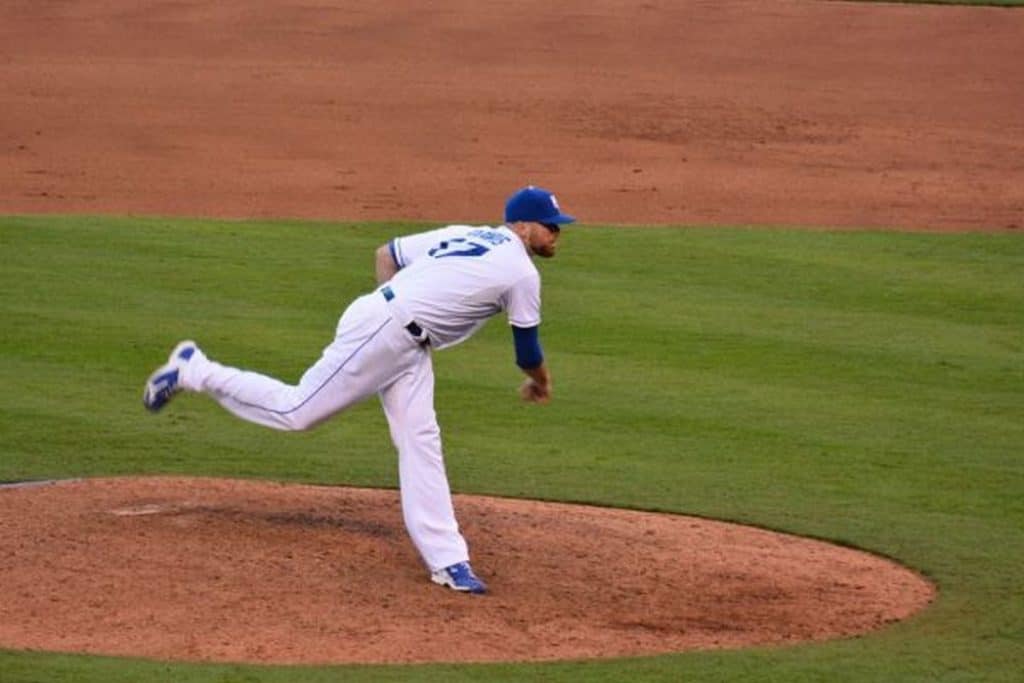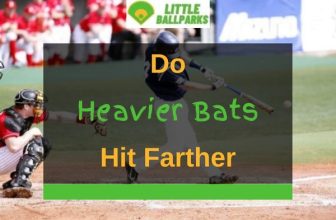What Is A Quick Pitch In Baseball? (Explained In Detail!)
A baseball game mostly revolves around the duel between pitcher and batter.
While it would be nice if the game moved more quickly, each pitch takes some time as both players go through their pre-pitch routines.
It helps both players get in the rhythm and in the right state of mind to perform to their best.
A common part of this is the pitcher waiting out the batter while he takes a few practice swings and gets settled at home plate.
However, you may have noticed that, in rare cases, a pitcher will throw the ball before the batter is ready to react.
This move, known as a quick pitch, is often the cause for confusion among the fans who are not totally sure if this is even legal.
To clear things up, I’ll explain what is a quick pitch in baseball and are the pitcher allowed to use it.
So, let’s dive in!
Table of Contents
What Is A Quick Pitch In Baseball?
Simply said, a quick pitch is thrown by the pitcher before the batter is reasonably ready for the pitch.
A pitcher has to pause before throwing the ball and give the batter time to properly set up and prepare for the incoming pitch.
The most often instance of a quick pitch is when throwing from the set position.
In that case, a pitcher must make a complete stop after completing a preliminary motion known as “the stretch” and before engaging in a throwing motion.
Quick pitch can also occur when the pitcher disengages the rubber after taking signs and then quickly comes back on it and pitches.
When disengaging the rubber, a pitcher must always make a pause and drop his hands to his sides.
Basically, any deliberate effort by a pitcher to catch a batter unprepared and off-guard can be described as a quick pitch.
Are Quick Pitches Illegal in Baseball?

According to the MLB Rulebook and its Rule 5.07, quick pitches are illegal. There are two reasons for this.
Allowing pitchers to deliver the pitch before the batter is properly set up will would provide them with an unfair advantage over their opponents.
The second reason, and probably the more important one, is that quick pitches can be very dangerous.
Even though batters wear protective equipment, a quick pitch can put their safety at great risk and cause rather severe injuries.
While setting up for the pitch, many batters look down at their feet and try to assume their best position.
A wild pitch flying towards them at this moment would leave them defenseless and with almost no time to react and prevent an injury.
Can a Quick Pitch be Legal?
Sometimes a pitcher will simply speed up his throwing motion or change his standard rhythm a bit.
If the batter is already set up and expecting a throw, then this type of quick pitch is legal, as it’s simply a quick delivery to trick the batter.
However, strictly speaking, these pitches do not belong to quick pitches as described by the rulebook.
How is Quick Pitch Penalized?
The penalty for a quick pitch delivered by the pitcher depends on the current situation on the field.
If there are no runners on base (bases are empty), a quick pitch is deemed a Ball, regardless of whether the batter has swung at it or if it’s inside the strike zone.
If there are runners on base, the umpire will call a Balk, and the penalty will be “no pitch, each runner advance one base.”
Why do Pitchers Throw Quick Pitches?

Even though a quick pitch is considered illegal, calling it depends on the umpire’s judgment.
As they have to intervene on a live pitch, umpires may sometimes miss the call and let pitchers get away with it which some hurlers try to use to their advantage.
There are three main reasons why some pitchers will attempt a quick pitch.
First of all, it may help them surprise the batter and force a strike. Also, in some cases, they can get them out through forced fly ball.
Finally, a quick pitch can have a psychological impact on batters, distracting them, making them anxious, and throwing them off their game.
However, even if a pitcher gets away with it, this proactive is frowned upon among ball players and the baseball community in general.
Quick pitches, when they happen, can often be a reason for brawls among players.
What Happens When a Batter Hits the Ball on a Quick Pitch?
Although this happens extremely rarely because of the very short time of reaction and almost impossible timing, a batter will sometimes manage to get a hit on a quick pitch.
If they’re able to see them coming and react in time, quick pitches are, basically free swings for batters as they won’t face any consequences if they miss, similar to a pitch following a balk.
When the batter misses the ball or doesn’t reach the base, he still remains at bat as there will be a quick pitch called and a ball will be added to his count.
If it happens to be a Ball 4, he’s awarded first base on a walk.
On the other hand, if he manages to hit the ball and gets on the base, the play is accepted and the violation is nullified.
Conclusion
If you’re looking for the very essence of baseball, it’s probably the battle between the pitcher and the batter.
The face-off between the man on the mound and the man at the home plate puts every play in motion and dictates the outcome of the entire game.
Pitchers who come out on top in this duel commonly get the most credit for their team winning the game.
However, putting the batter out takes a lot of skill and smarts, as the key to successful pitching is to deceive the batter and catch them off-guard.
Some of those moves, however, are both illegal and unfair and this certainly includes quick pitches.
Even if a pitcher gets away with it, a quick pitch goes against the spirit of the game and can put the batter in serious danger.
Of course, most pitchers understand this and respect the batter’s routine, holding their trigger until their opponent is ready to react.




